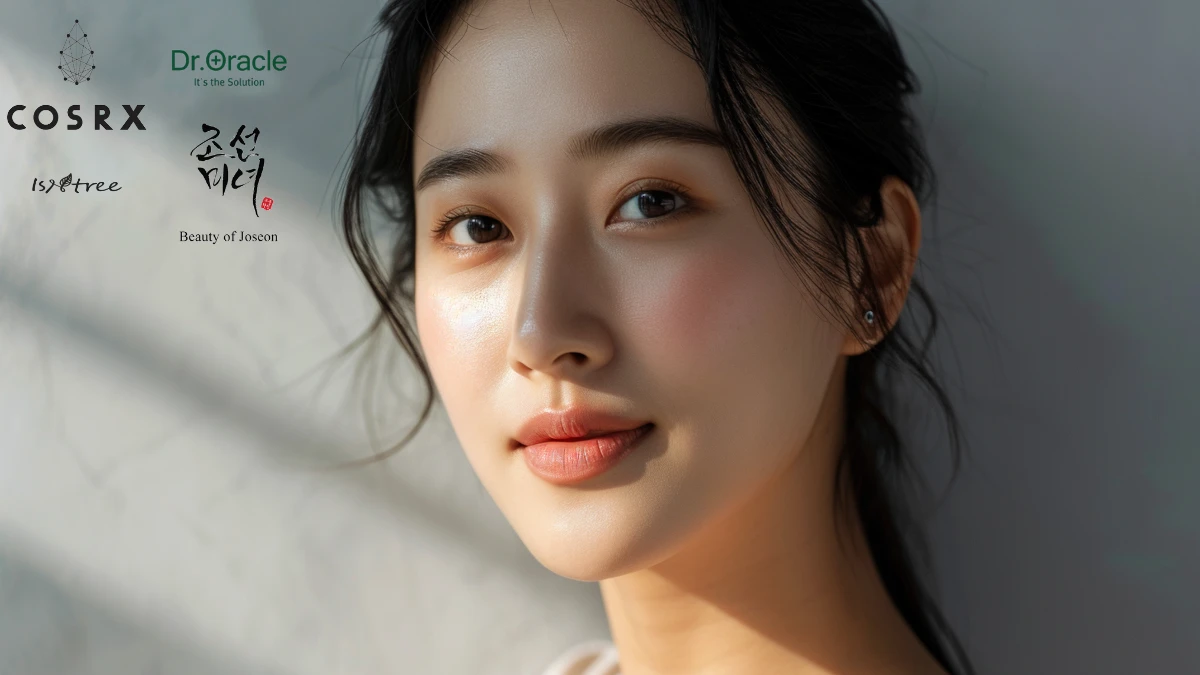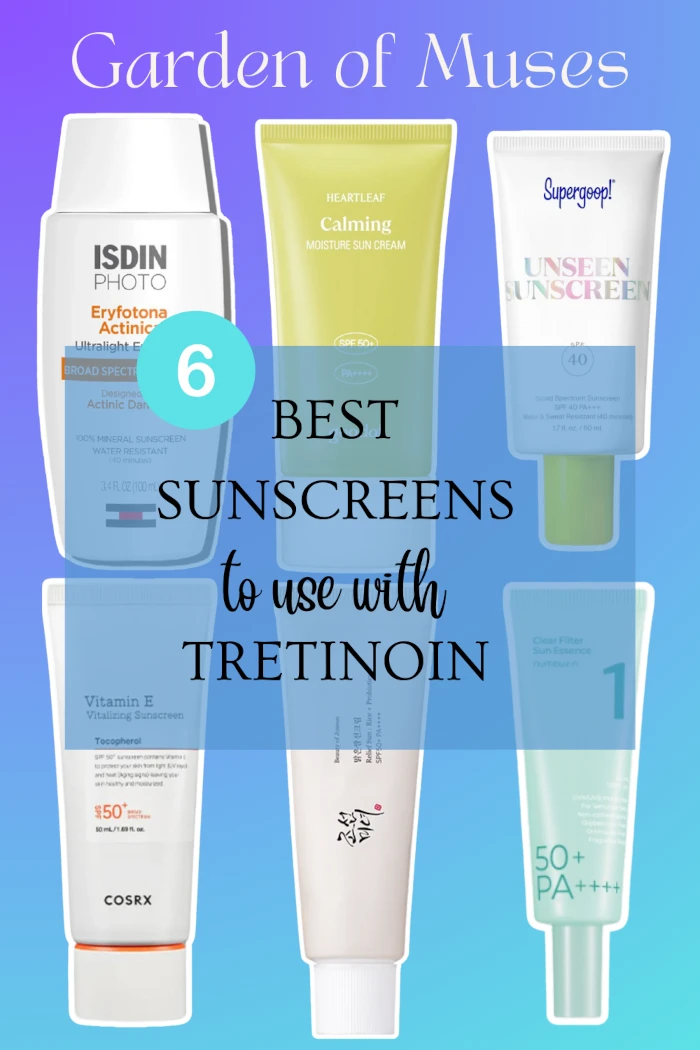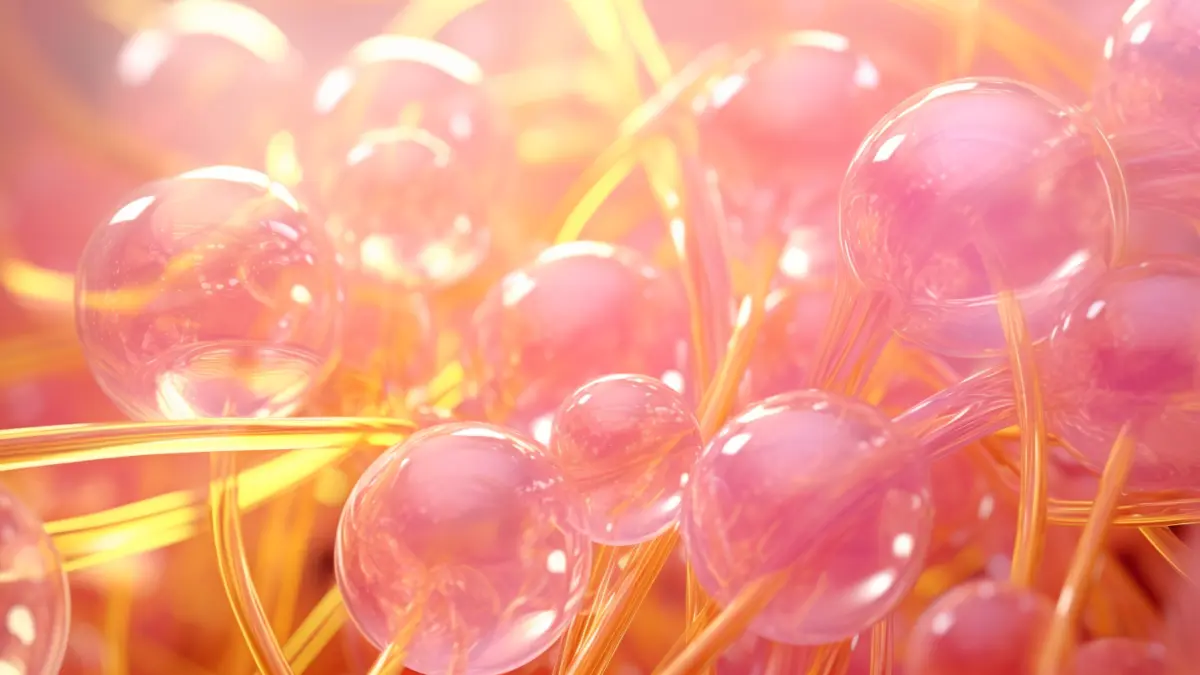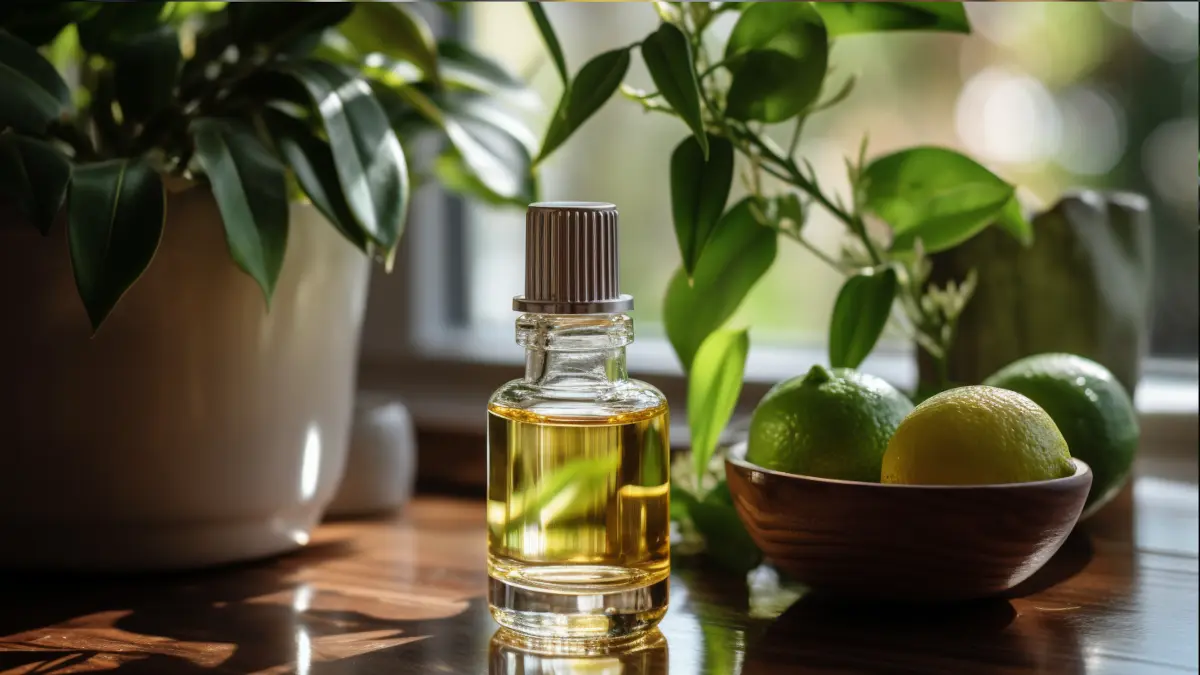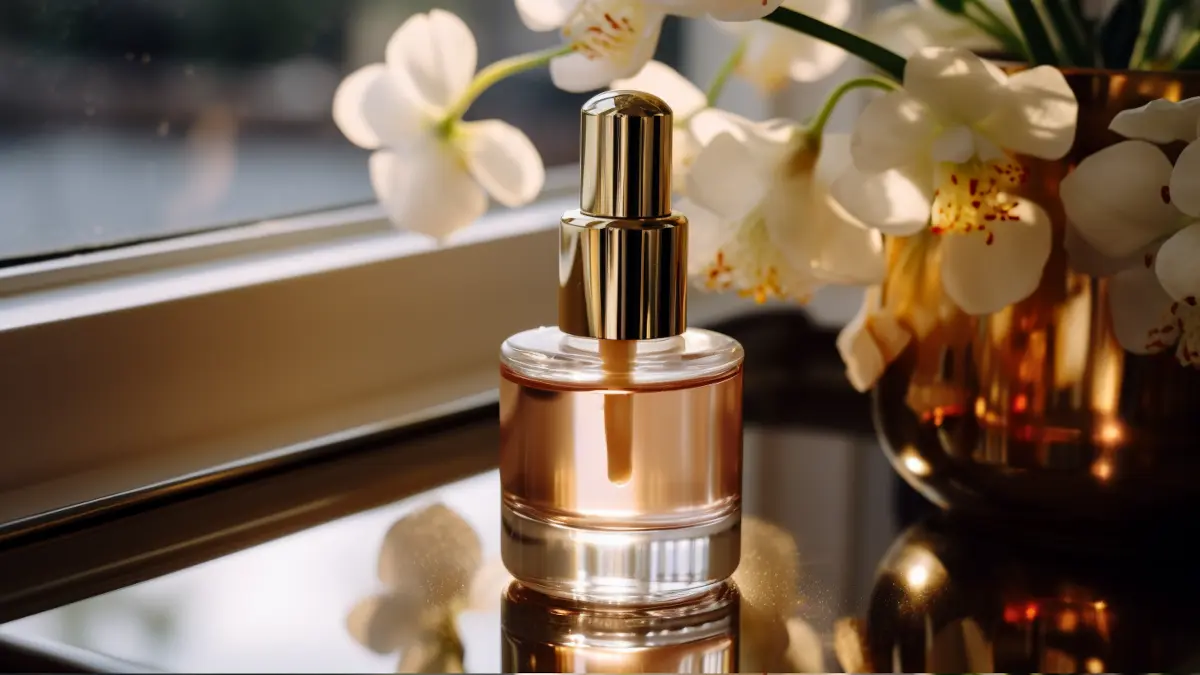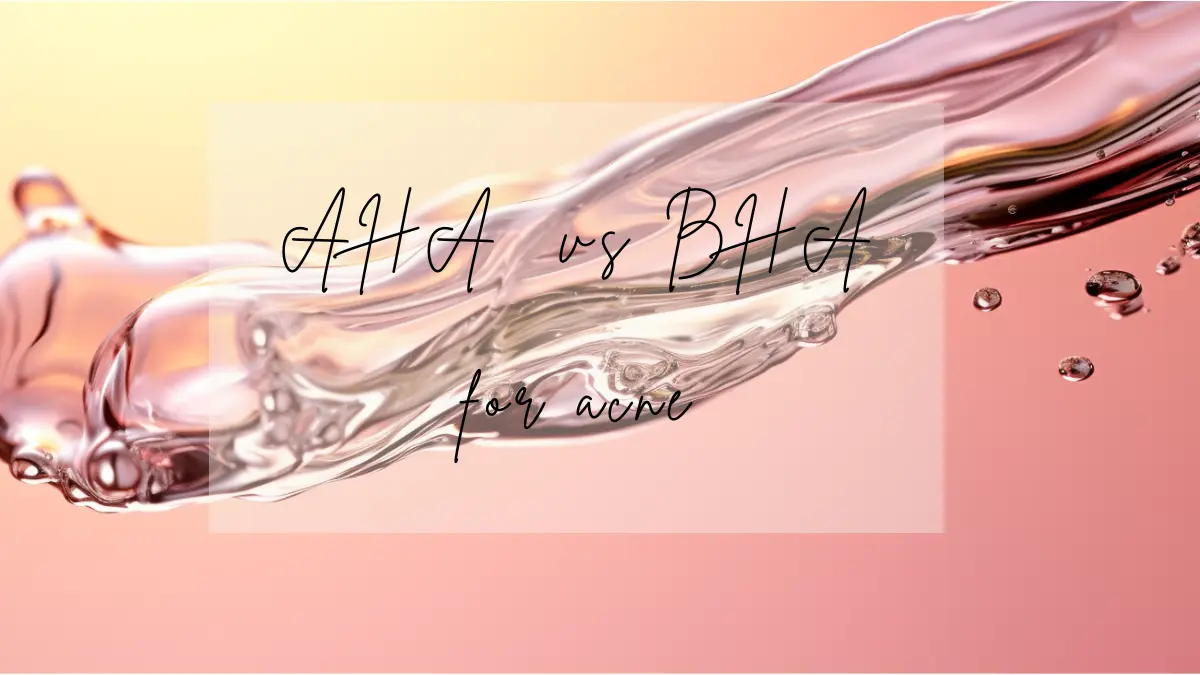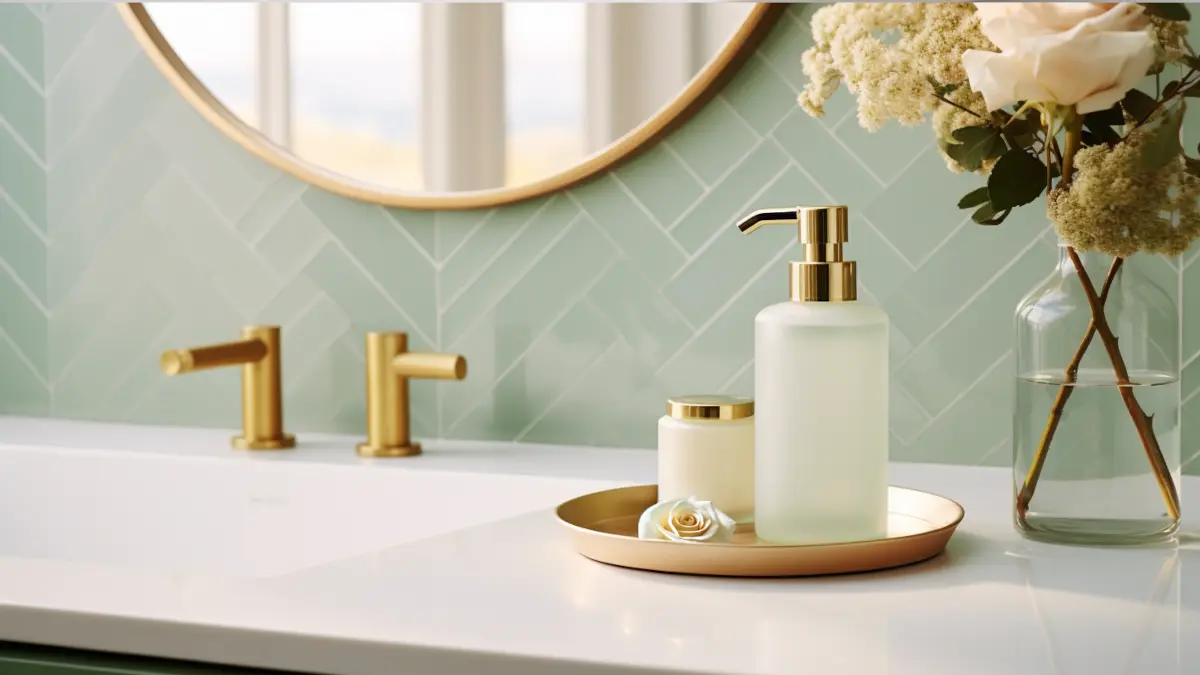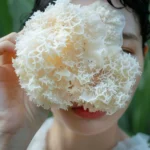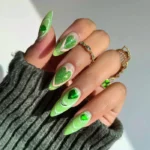If I had to pick public enemy #1 in my never-ending quest towards good skin, I would say that my most vicious battles thus far have been with evening out my skin tone.
Treating hyperpigmentation is most effective when addressed with a multi-faceted approach, and there is no magic ingredient. You want to:
- Inhibit increased melanin production,
- Decrease inflammatory processes or the cause,
- Encourage the turnover of skin cells,
- Remove dull, dead surface cells, and
- Protect healthy skin from damaging sun rays.
There are steps you can take to minimize the extent to which your skin is affected by hyperpigmentation:
- Apply sunscreen every morning and reapply throughout the day to prevent future hyperpigmentation caused by sun exposure.
- Treat hyperpigmentation – to some extent – at home. Look for skincare products containing vitamin C or vitamin C derivatives, niacinamide (vitamin B3), arbutin, azelaic acid, kojic acid, licorice root extract, and retinoids (vitamin A or vitamin A derivatives). I also like natural oils, including tamanu oil and rosehip oil.
- Incorporate skincare products containing AHAs and BHAs into your routine. These will increase cell turnover and buffer away some hyperpigmentation.
There are quite a few options to consider when putting together a regimen. Korean skincare recommendations included.
What Causes and How to Treat Hyperpigmentation with Korean Skincare:
A Little Bit on My Hyperpigmentation
Originally from Indonesia and living in Singapore, I’ve spent much time in the sun without sunscreen. So, it was no surprise that I noticed many sunspots on my face when I reached my mid-thirties. Hyperpigmentation, which is an excess of melanin gathered in an area, resulting in dark spots on the skin, is, unfortunately, a constant thing I deal with. My skin tone generally falls into the medium category and tans quickly.
After my pregnancy, I also noticed that I now had darker patches of skin on my forehead and nose.
Before I discovered Korean skincare, I thought laser treatment was my only option for treating sun spots. I’m still fixing my neglected skin. I still have my sun spots – see the photo for proof, but I’ve spent many hours researching treating hyperpigmentation and the best products.
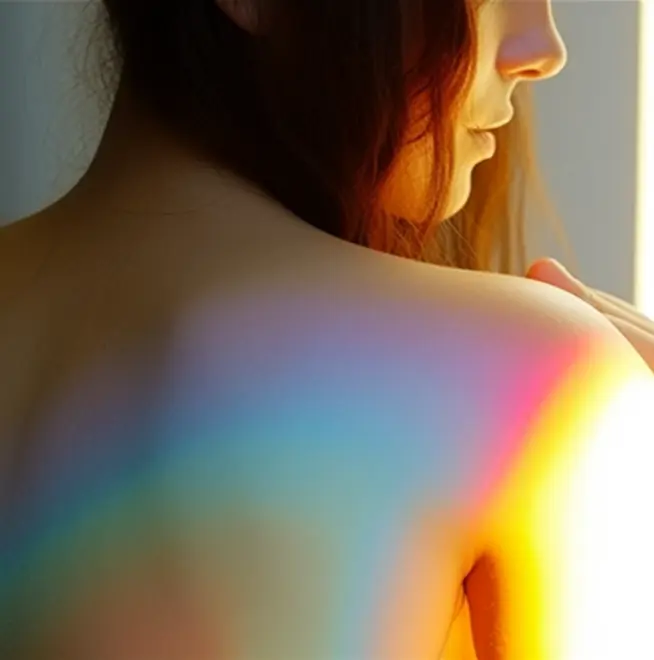
What Is Hyperpigmentation?
Without getting too carried away with the science, hyperpigmentation occurs when melanocytes (a type of cell in our skin) produce pigment in response to internal and external stimuli. This pigment has uneven skin tone or dark spots like sunspots or acne scars that we love to hate.
There are many types and causes of hyperpigmentation, some affecting some skin tones more than others. Also, you may find that you suffer from more than one of these types at the same time. In my case, it’s sunspots, melasma, and some light acne scarring.
As I mentioned above, certain factors can influence how prone you are to the development of hyperpigmentation on your skin. Two of the most significant factors are race and gender.
People with darker skin tones tend to be more prone to hyperpigmentation due to active melanocytes in their skin. Females are also more prone to hyperpigmentation than men, especially during pregnancy.
The 4 Main Forms of Hyperpigmentation
I was interested in discovering several types of hyperpigmentation, and of course, being the science nerd that I am, I just needed to classify these for you.
Hyperpigmentation can range from a deeper, almost purple-toned dark brown to bright red. There are many ways to join this club, and I’d like to cancel my membership.
I’d also like a refund on whatever subscription I apparently signed up for to Perpetual Redness Digest because I regularly have some redness on my face. And while it’s not a full-blown medical skin condition, i.e., rosacea, it certainly isn’t helping my skin look even.
1. Post-Inflammatory Hyperpigmentation (PIH)
The most common form of hyperpigmentation results from any inflammatory processes. Anything that causes trauma to the skin, such as acne, eczema, and psoriasis, can cause hyperpigmentation.
As if acne isn’t traumatizing enough, we are often left with scars that can take quite a while to disappear. Generally, the marks left from acne have a brown appearance and are more visible in medium to dark skin tones due to having more active pigment-producing melanocytes.
How to Get Rid of Post-Inflammatory Hyperpigmentation – AKA Acne Marks
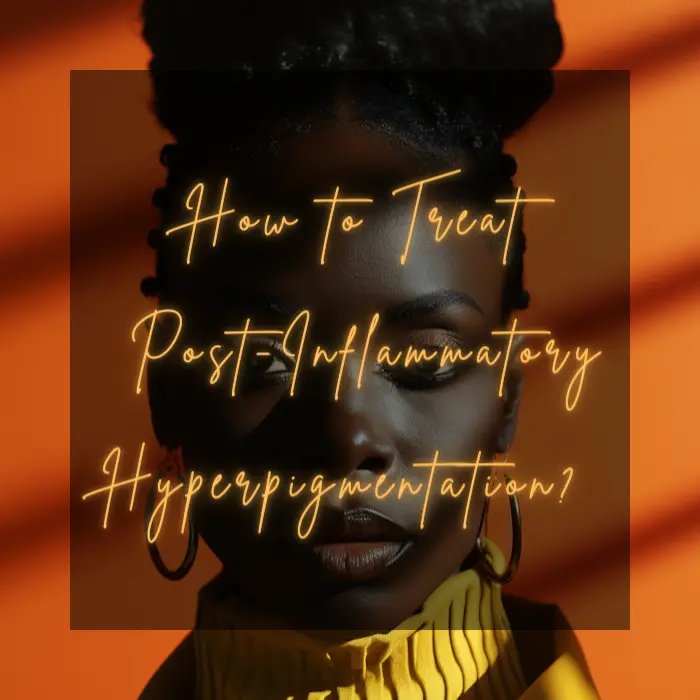
The most effective treatment for this type of hyperpigmentation would involve products that inhibit the production or transfer of melanin within the skin or those that increase the speed of cell turnover to reveal newer and brighter skin cells.
2. Post-Inflammatory Erythema (PIE)
This type of hyperpigmentation is also caused by trauma to the skin (such as acne). However, the spots you see on your skin will be red or pink instead of brown. It is thought that this type of hyperpigmentation is a result of broken capillaries underneath the skin after popping or picking a pimple. Lighter skin tones are more prone to post-inflammatory erythema. Unfortunately, there is not much evidence yet to say what types of products are most effective in treating this form of hyperpigmentation.
This type of hyperpigmentation does fade over time. However, laser treatment is currently the best available treatment to speed up this process.
Prevention is, therefore, best, so ensure you keep your skin well hydrated and protect its moisture barrier. Acne prevention and resisting picking and popping pimples are crucial, too!
3. Melasma
Melasma is the most challenging type of hyperpigmentation to prevent because it is most commonly caused by hormonal changes experienced during pregnancy or when starting birth control. It appears as darkened patches of skin and looks more extensive and blotchy compared to sunspots.
Sun exposure can also worsen melasma. Again, this type of pigmentation results from the overproduction of melanin, and therefore, products that work to break down pigment within skin cells work best.
4. Sun Spots & Freckles
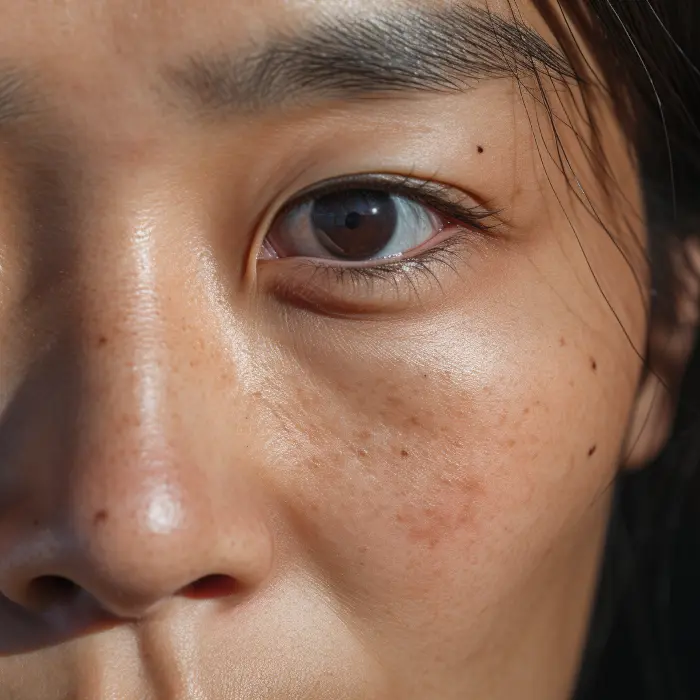
Hyperpigmentation induced by sunlight is also very common. The more time you spend in the sun (and the less sun protection you wear) – the more sun damage your skin will have. This damage usually appears as sunspots, which look like areas that are slightly darker than the surrounding areas. Usually, the cheeks are most affected. Sunspots are more visible in Asian and Caucasian skin.
Products that work to break down pigment within skin cells work best for treating this type of hyperpigmentation.
No matter your age or how you’ve been protecting your skin, it’s not too late to take my advice: wear sunscreen daily.
The Best Ingredients to Treat Hyperpigmentation
Thankfully, with all the ways you can join Club Hyperpigmentation in the town of Never-ending Redness, there are also several ways to even out your skin tone. Which products you choose to use depends on your hyperpigmentation type.
Also, if you have sensitive or acne-prone skin, slowly adding new products to your routine is best. Otherwise, you might just be doing more damage.
But first, let me make it abundantly clear that when I use terms like brighten, I do not mean whitening your skin. I have no interest in changing mine or anyone’s skin tone. I am interested in helping my skin be as even as possible.
Now that we have that out of the way, here are some of my favorite skincare ingredients for brightening and tackling blotchy, uneven skin. I have also included Korean products I recommend since I’m currently having a love affair with Korean skincare.
Tretinoin, the Superstar of Skin Renewal
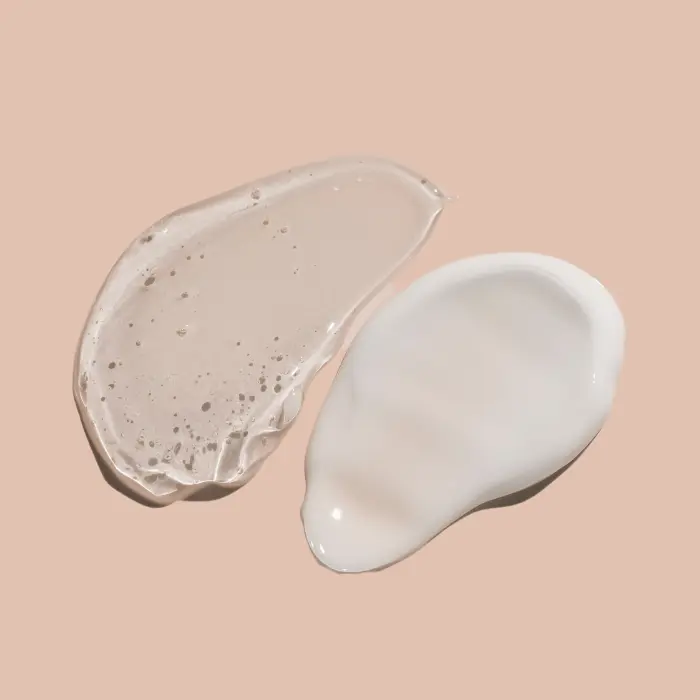
1. Retinoids
Retinoids are skin-communicating ingredients that encourage skin cell turnover and produce youthful, healthy cells. A product such as a prescription Retin-A can super boost any anti-pigmentation regimen. You’ll have to get a prescription for Retin-A, but 1% retinol is also very effective.
Retinol is a derivative of vitamin A and deserves its post as it is a powerful ingredient for fighting acne, treating hyperpigmentation, and anti-aging. It works to decrease oil production, promote cellular turnover, and increase collagen synthesis.
Retinol was introduced into the skincare market about 20 years ago as a more accessible alternative to retinoic acid (which requires a prescription). But, many people shy away from retinol as it can irritate the skin and cause dryness, redness, discomfort, and even breakouts. It also makes your skin more sensitive to the sun and degrades quickly once in contact with light and air.
So why would I mention an ingredient if it has so many drawbacks? The good news is that you can still benefit from the brightening effects of retinol if you follow some simple tips – your skin can build a tolerance to retinol if you make sure to start with low concentrations and work your way up:
- Perhaps only use retinol in your routine every second or third night.
- Look for products containing other ingredients that will provide extra hydration to your skin.
- Ensure you are extra vigilant in applying sunscreen throughout the day. We all should be doing it anyway.
- Store your retinol-containing products properly to minimize any ingredient degradation in the product.
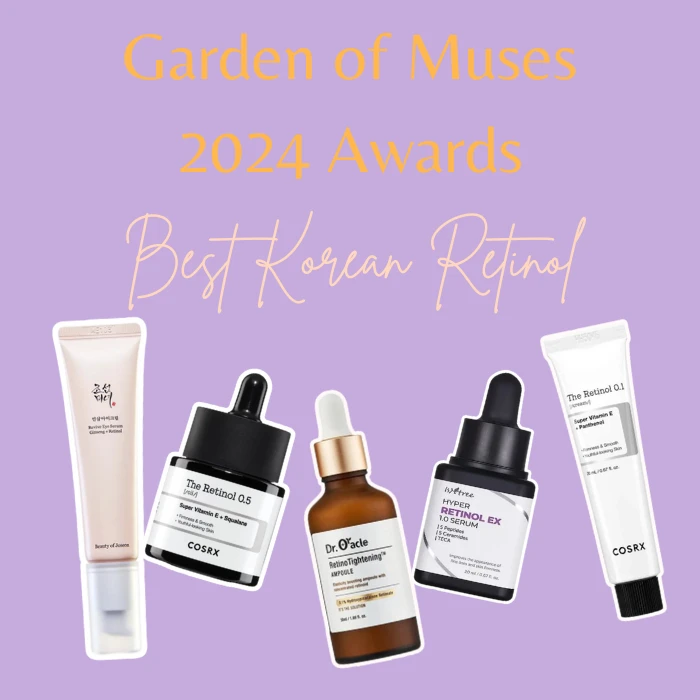
Retinol vs. Retinoic Acid
You may have heard the names retinol and retinoic acid and might be wondering what the difference is. Retinol has been used since the 1980s in Western skincare products for its powerful benefits in photo-aging treatment.
As I’ve mentioned, retinol is a natural vitamin A derivative in our skin. Retinol is a precursor of its active form – retinoic acid. This means that for retinol to be effective on our skin, it must be converted by enzymes to retinoic acid first.
You can buy skincare products (over the counter) containing retinol because it’s not as potent as topical retinoic acid. There are creams available containing retinoic acid, commonly known as tretinoin. However, these require a doctor’s prescription.
What is Retinal?
To confuse you even more, there’s one more retinoid that I’d like to talk about – retinal.
Retinal is an excellent alternative to retinoic acid. It’s also known as retinaldehyde and is much more effective than retinol. Studies have shown it to work 11 times faster than retinol. This is because only one step is required to convert the retinal into retinoic acid, whereas two steps are needed to convert retinol into retinoic acid.
It’s also gentler and less irritating than retinol and is, therefore, better for sensitive skin.
If you want to use retinoids in your skincare routine to treat hyperpigmentation, I recommend starting with retinal products.
Korean Skincare Products Containing Retinol
In the past, Korean skincare has shied away from retinol, even though it is a very effective skin-brightening ingredient. This is because, as I’ve discussed above, it’s much more irritating than other brightening ingredients such as niacinamide and vitamin C. But now, almost every brand is coming out with a retinol.
Retinol is still a very effective ingredient for fading hyperpigmentation, although, as I mentioned, two conversion steps must be taken to convert it into retinoic acid on the skin.
Remember, retinol can be a little more irritating than retinaldehyde. I’m happy to let you know our editor has picked the Best Korean Retinols.
Some By Mi Retinol Intense Reactivating Serum
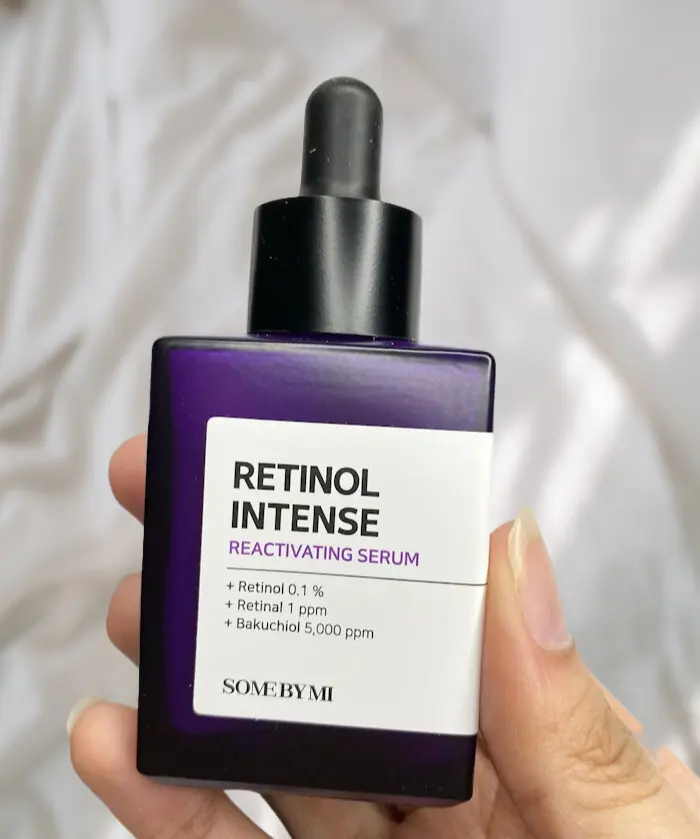
SOME BY MI Retinol Intense Reactivating Serum combines 0.1% retinol with retinal and bakuchiol. This serum blends nicely with any moisturizer you use.
It is the perfect starting point for retinol if you have extra sensitive skin and should build a tolerance to retinoids more slowly.
This formulation has everything in it. I mean it. Besides the retinoids, it helps treat hyperpigmentation with niacinamide and licorice root extract. To buffer irritation, it contains humectants: glycerin, panthenol, butylene glycol, beta-glucan and propylene glycol. It also has soothing ingredients such as mugwort and six types of Centella Asiatica derivatives. They added ferments, adenosine, collagen, and ceramides. I don’t know, is there anything missing?
2. Azelaic Acid
Azelaic acid deserves a dedicated love letter because it’s another one of those ingredients that can do so many different things for the skin and help combat a large variety of skin concerns. But I wanted to mention it here for its ability to reduce redness and inflammation in the skin.
When we’re talking uneven skin tone, a lot of focus gets placed on dark spots, whether from the sun, breakouts, or other types of exposure and damage. But I don’t think people realize how much of an impact generalized redness and the reduction of that redness can have on the overall appearance of the skin. Your eyes may not zoom straight in on patches of redness across your cheeks or forehead as they do on a pimple or a sunspot, but tamping down that low level of redness can help make things look much more evened out than you think.
Azelaic acid is an ingredient that only recently became available without a prescription in skincare products. Before that, it was commonly prescribed to people with rosacea-prone skin.
It is derived from whole grains such as wheat and barley. It has incredible acne-fighting properties (including cystic acne) by removing acne-causing bacteria deep within the pores. Azelaic acid is a natural exfoliator that helps reduce the buildup of dead skin cells, reducing the formation of black and whiteheads. It also has excellent sebum-controlling properties.
How Does Azelaic Acid Treat Hyperpigmentation?
Regarding treating hyperpigmentation, I was pleasantly surprised to learn that azelaic acid is excellent at reducing acne scarring and melasma by breaking down the pigment within them.
Unlike other actives, it is well tolerated by people with all skin types and doesn’t cause photosensitivity. It can, however, cause some stinging and dryness upon application. It is recommended to use it as a spot treatment or only to apply it every other day while building up a tolerance. Azelaic acid doesn’t damage the skin barrier or cause transepidermal water loss.
Products Containing Azelaic Acid
Azelaic acid is an excellent ingredient for reducing acne and treating hyperpigmentation.
Cos De BAHA Azelaic Acid 10% Serum
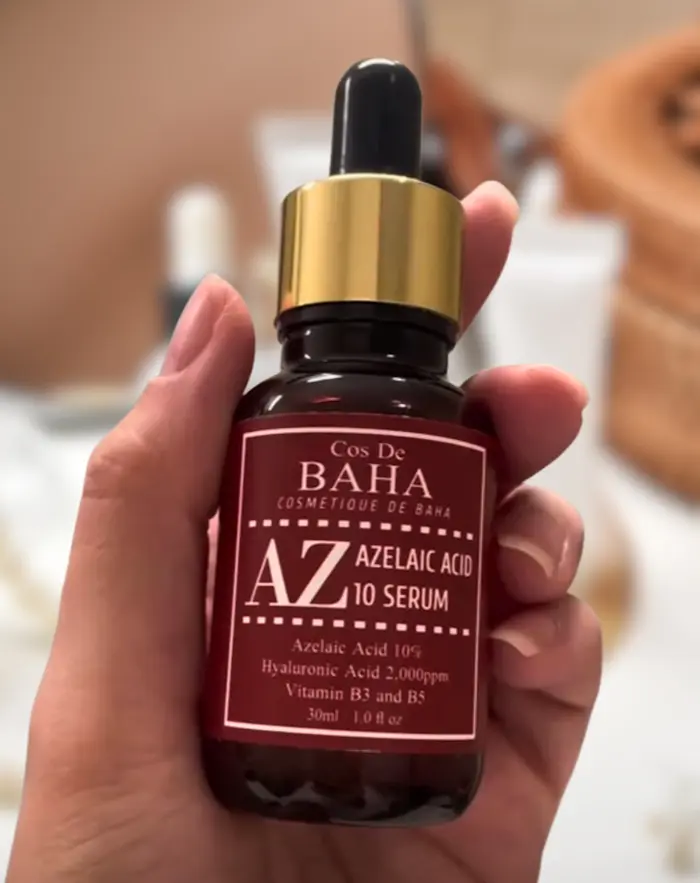
Cos De BAHA Azelaic Acid, 10% Serum, has a high percentage of azelaic acid, which can be hard to find. It’s super affordable, too, and I think it’s a great beginner’s choice.
Although azelaic acid is most effective at 15-20% until your skin can tolerate higher concentrations, the above product is excellent.
I’ll be watching to see what happens with azelaic acid in the skincare world, and you can bet that I’ll write about it here!
3. Niacinamide
I’ve already gone on extensively about how niacinamide can bless your skin, so I won’t go on forever about why it was my first true love in skincare.
Niacinamide is one of the most well-documented and widely adored ingredients in the beauty industry, and with good reason.
This is another multi-tasker ingredient that encourages skin cell turnover. It also has anti-inflammatory properties and not only treats hyperpigmentation but also acne. Some people find it as effective as some topical antibiotic treatments.
Niacinamide is super gentle and hardly irritates – making it preferable over other brightening ingredients (such as vitamin C, retinoids, and hydroquinone) in Korean skincare.
While I’ve enjoyed benefits beyond just a brightened, more even complexion thanks to niacinamide, its skin-brightening benefits drew me to it in the first place, and I have never looked back. Seriously, I refuse to take it out of my skincare routine, no matter how appealing other products or lines may be, and this will not change any time soon.

How Does Niacinamide Treat Hyperpigmentation?
Niacinamide works differently from vitamin C. Vitamin C inhibits the activity of tyrosinase (the enzyme that stimulates melanin production). Instead, niacinamide treats hyperpigmentation by preventing packets of melanin pigment from reaching the outer layers of the skin.
In other words, niacinamide prevents hyperpigmentation by stopping melanin from reaching skin cells in the epidermis. Using vitamin C and niacinamide in your skincare routine would provide the best results. This is because you would, in effect, reduce the production of melanin (vitamin C) while also stopping melanin from being deposited in your skin cells.
Niacinamide Benefits
Niacinamide has many other benefits, too, making it a skincare powerhouse! It increases your skin’s antioxidant ability, allowing it to soak up free radicals (thereby preventing skin damage, cancer, and premature aging).
It regulates sebum production and improves the skin’s barrier function by speeding up the replacement of skin cells. This increases the production of ceramides, helping your skin stay hydrated for longer. It even reduces the appearance of fine lines and wrinkles by increasing collagen production. If you want to know more, read the 101 on Niacinamide.
Can I Use Vitamin C and Niacinamide at the Same Time?
Yes! You can use vitamin C and niacinamide at the same time. Some believe the two cancel each other out when added to the skin simultaneously. However, this is based on poorly conducted research conducted in the 1960s.
New research has shown that using vitamin C and niacinamide together causes no additional skin irritation and that these two ingredients boost each other’s effectiveness.
Best Korean Skincare Products containing Niacinamide
Many Korean skincare products contain niacinamide since Korean skincare revolves a lot around skin brightening and because niacinamide is a gentle ingredient with so many benefits.
You can learn much more about niacinamide and the best niacinamide-containing Korean skincare products for treating hyperpigmentation in this Niacinamide for Hyperpigmentation article.
However, if you don’t have time to read that article right now, here is a fantastic serum with niacinamide:
RNW Der. Concentrate Ceramide Plus Serum
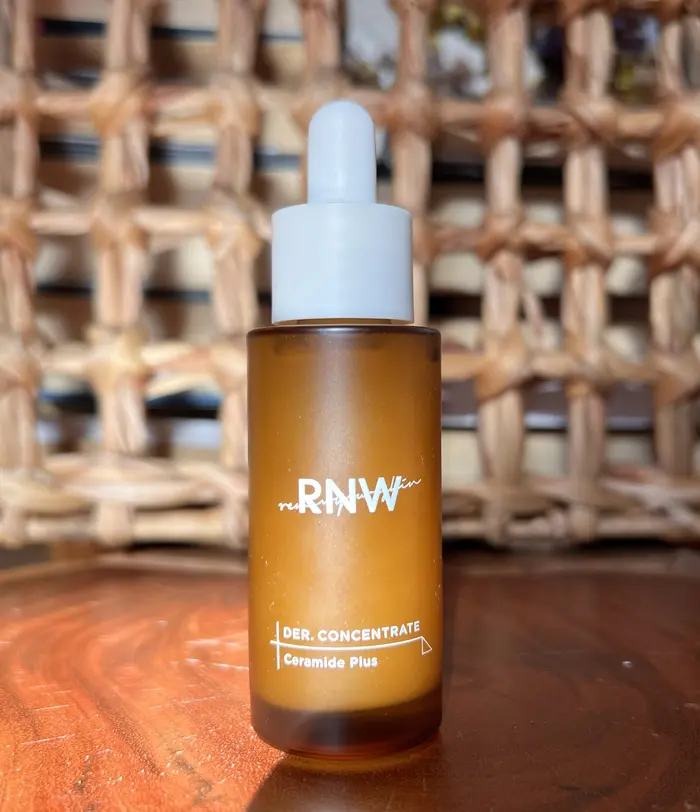
Along with niacinamide, RNW Der. Concentrate Ceramide Plus Serum has an impressive ingredient list: five ceramides, eight peptides, and many humectants. I haven’t yet discovered that there’s such a thing as too many ceramides in a routine. So, while the rest of my skincare regime is likely also helping with hydration and moisturization, I’ve felt immediate hydration by adding this product to the mix. Read Mia’s RNW Der. Concentrate Ceramide Plus Serum review.
RNW Der. Concentrate Ceramide Plus Serum Ingredients List (last checked 2025)
Water, Dipropylene Glycol, Glycerin, Methylpropanediol, Glycereth-26, 1,2-Hexanediol, Niacinamide, Dimethicone/Vinyl Dimethicone Crosspolymer, Betaine, Cynara Scolymus (Artichoke) Leaf Extract, Avena Sativa (Oat) Kernel Extract, Ceramide NP, Ceramide EOP, Ceramide NS, Ceramide AP, Ceramide AS, Acetyl Hexapeptide-8, Nonapeptide-1, Palmitoyl Tetrapeptide-7, Palmitoyl Pentapeptide-4, Palmitoyl Tripeptide-1, Hexapeptide-9, Tripeptide-1, Copper Tripeptide-1, Beta Vulgaris (Beet) Root Extract, Eclipta Prostrata Leaf Extract, Algae Extract, Persea Gratissima (Avocado) Oil, Camellia Sinensis Leaf Water, Hydrogenated Lecithin, Cholesterol, Squalane, Tocopherol, Hydrolyzed Hyaluronic Acid, Polyquaternium-51, Glyceryl Stearate, Beta-Glucan, Adenosine, Fructooligosaccharides, Xanthan Gum, Tromethamine, Glyceryl Polymethacrylate, Sucrose Distearate, Acrylates/C10-30 Alkyl Acrylate Crosspolymer, Butylene Glycol, Silica, Hydrolyzed Corn Starch, Caprylyl Glycol, Ethylhexylglycerin.
Ingredients referred from RNW Website.
Active Humectant/Moisturizing Herbs
4. Kojic Acid
Kojic acid is a natural ingredient derived from mushrooms, but it can also be created during the sake brewing process from fermented rice.
How Kojic Acid Treats Hyperpigmentation
Regarding treating hyperpigmentation, Kojic acid works similarly to vitamin C and arbutin by inhibiting the enzyme tyrosinase, which inhibits melanin production.
Kojic acid is an effective ingredient for treating all types of hyperpigmentation, whether sunspots, melasma, or acne scarring. I found it difficult to find much information on kojic acid, which seems to be not discussed as much as vitamin C or niacinamide.
However, this study found 4% hydroquinone more effective than 0.75% Kojic acid at fading melasma. A Journal of Cosmetic Dermatology study reported that kojic acid alone is less efficient than 2% hydroquinone in treating hyperpigmentation.
Kojic Acid Can Be Irritating
Unfortunately, as with hydroquinone, kojic acid can irritate the skin. It can lead to contact dermatitis, especially in people with sensitive skin. Kojic acid is, therefore, found in very low concentrations in skincare products (usually below 1%).
I would be cautious when using Kojic acid-containing products as many people are sensitive to this ingredient. One study even found that people were more sensitive to kojic acid than hydroquinone!
Kojic Acid In Japanese Skincare Products
Kojic acid is more widely used in Japanese skincare products than Korean skincare products, and you will find a lot of soaps and body lotions containing it.
5. Vitamin C
Vitamin C is an antioxidant that reduces fine lines and wrinkles. It is also probably the most popular ingredient when treating hyperpigmentation.
How Does Vitamin C Help Treat Hyperpigmentation?
What makes vitamin C such a sought-after ingredient? This vitamin is a naturally occurring antioxidant in our skin, which helps to protect it from UV photo-damage, helps treat hyperpigmentation, increases collagen production, and helps to prevent transepidermal water loss.
Vitamin C works by inhibiting tyrosinase, an enzyme involved in melanin production. As we age, however, the production of this vitamin C starts to decrease, which is why it’s so important to incorporate it into our skincare routine.
Want to Learn More about Vitamin C in Skincare?
Choose Products Containing L-ascorbic Acid (L-AA)
If you’re searching for the perfect vitamin C serum, you might realize it comes in many forms, such as L-ascorbic acid and sodium ascorbyl phosphate. It’s best to choose a product containing L-ascorbic acid, also known as pure ascorbic acid or LAA, as it is the most well-known and researched form of vitamin C. It is the most effective form of penetrating the skin barrier.
Sadly, this form of vitamin C is the most difficult to formulate as it is prone to oxidation upon contact with light and air. Therefore, avoid vitamin C-containing products packaged in clear bottles, and don’t buy serums that come in amounts that you could never use in time.
It’s also important to look at the concentration of Vitamin C in the product you’re considering buying, as a concentration of 20% is the most effective at fading hyperpigmentation.
Best Korean Vitamin C Serums with L-Ascorbic Acid in 2025
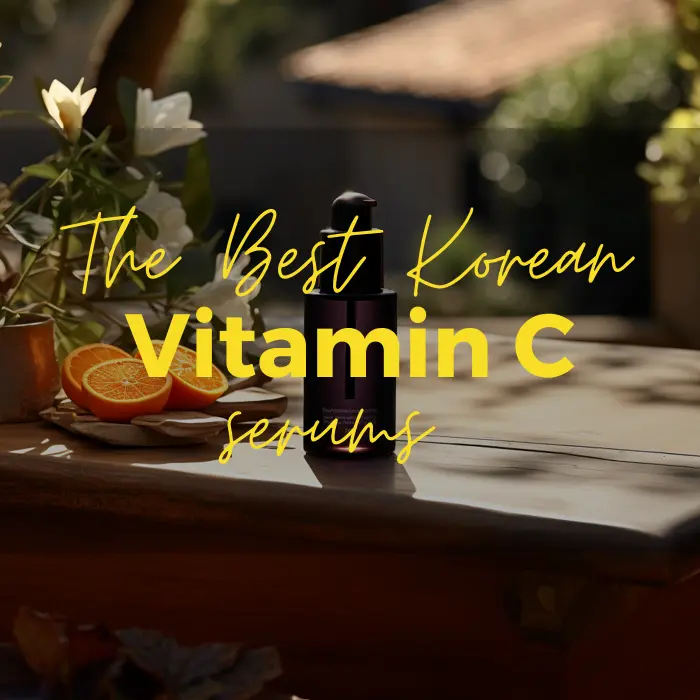
Why Not Just Eat Lots of Oranges?
So why can’t we take a vitamin C supplement, eat lots of oranges, or even make our vitamin C serum using supplements or citrus fruits? The answer is that the most effective concentration of vitamin C is around 20%. It also needs to be in an aqueous form and have a pH of 3-3.5 for it to be absorbed into the skin and for the product to remain stable.
Also, many studies have shown that the effectiveness of vitamin C is significantly increased when combined with other potent antioxidants such as vitamin E and ferulic acid—these improve the protection against UV and free radical damage.
The Best Korean Vitamin C Serums for Hyperpigmentation
There are so many vitamin C serums on the market it can be challenging to know which one to buy. Check out this post about the essential things to look for in a vitamin C serum.
Anua Green Lemon Vitamin C Blemish Serum
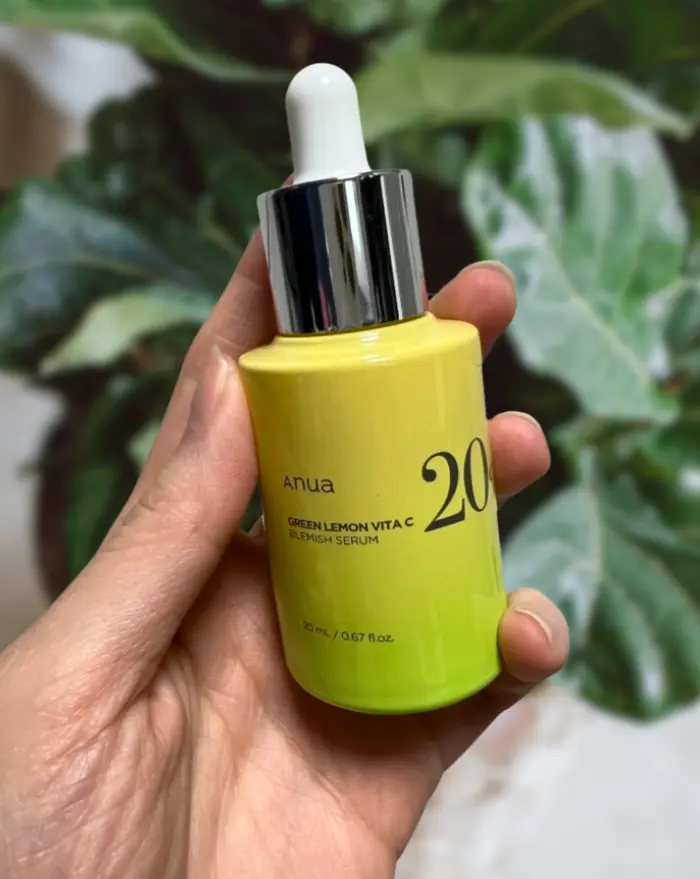
Vitamin C is my holy grail ingredient, so not only am I very discerning about what serums cut into my daily routine, but I’m always trying a new formula to find the best.
It doesn’t have that tell-tale vitamin C scent; instead, it imparts your skin and senses with a waft of light, citrus-floral scent, and dewy veil of product. You should skip this if your skin is sensitive to essential oils and fragrances.
I’ve used the Anua Green Lemon Vitamin C Blemish Serum for the past year. I chose the Anua Vitamin C Serum as it contains 20% pure vitamin C, plus Vitamin E and ferulic acid, which increase the effectiveness of the L-ascorbic acid in this product. It’s one of my top picks for a Korean vitamin C serum.
I also like that this serum contains four types of hyaluronic acid and many other humectants. The power-duo adenosine and niacinamide help reduce fine lines and hyperpigmentation.
Anua Green Lemon Vitamin C Blemish Serum is a lightweight oil-like consistency but absorbs well into the skin. The finish is very smooth and not sticky at all. I noticed that my skin looked more radiant the next morning.
Note: This stuff is pricier than the rest, but a little goes a long way. The bottle recommends using one to two full droppers on the face, but I find that smoothing six drops across the face is all you need to get a serious glow.
Pros:
- Contains optimal percentage of 20% pure LAA Vitaminc C, plus Vitamin E and Ferulic Acid;
- Contains niacinamide;
- It contains SAP, another vitamin C derivative, plus hydrating and soothing ingredients;
- Four types of hyaluronic acid;
- Opaque dropper bottle helps prevent oxidation.
- Alcohol-free
Cons:
- It contains fragrance and essential oils;
- Has a robust lemon-lime scent.
Price: $17-$42 / 0.67 fl. oz. (~$44 per ounce)
Anua Green Lemon Vitamin C Blemish Serum Ingredients List (last checked 2025)
Citrus Limon (Lemon) Fruit Extract (560,000 Ppm), Ascorbic Acid (200,000 Ppm), Propanediol, Butylene Glycol, Dipropylene Glycol, Cyclopentasiloxane, 1,2-Hexanediol, Cyclohexasiloxane, Sodium Hydroxide, C12-14 Alketh-12, Alpha-Bisabolol, Sodium Polyacryloyldimethyl Taurate, Water, Polyacrylate Crosspolymer-6, Dimethicone/Vinyl Dimethicone Crosspolymer, Xanthan Gum, Ethylhexylglycerin, Allantoin, Glycerin, Glutathione, Citrus Aurantium Dulcis (Orange) Flower Oil, Litsea Cubeba Fruit Oil, Adenosine, Citrus Paradisi (Grapefruit) Peel Oil, Disodium EDTA, Citrus Aurantium Bergamia (Bergamot) Fruit Oil, Mentha Viridis (Spearmint) Leaf Oil, Tocopherol, Ferulic Acid, Barosma Betulina Leaf Extract, N-Butyl Alcohol, Hydrogenated Lecithin, Polyglyceryl-10 Stearate, Sorbitol, Panthenol, Beta-Glucan, Sodium Hyaluronate, Sodium Ascorbyl Phosphate, Caprylic/Capric Triglyceride, Helianthus Annuus (Sunflower) Seed Oil, Hyaluronic Acid, Sucrose Stearate, Glyceryl Stearates, Beta-Carotene, Sodium Hyaluronate Crosspolymer, Niacinamide, Hydrolyzed Sodium Hyaluronate, Hydrolyzed Hyaluronic Acid, Thioctic Acid, Lycopodium Clavatum Extract, Thioctic Acid, Lycopodium Clavatum Extract, Equisetum Arvense Extract, Sodium Acetylated Hyaluronate, Pyridoxine, Hydroxypropyltrimonium Hyaluronate, Folic Acid, Biotin, Ceramide NP, Ubiquinone, Cyanocobalamin, Thiamine Hcl, Riboflavin, Linoleic Acid, Hesperidin, Ergothioneine, Limonene, Linalool, Citral.
Active Herbs Humectant/Moisturizing Emollient Brightening Essential Oils & Fragrance
6. Arbutin
If you’re like me and you’ve been researching how to treat hyperpigmentation, you’ve probably come across the ingredient hydroquinone at some stage.
Arbutin is derived from hydroquinone and delivers serious brightening power with much less chance of irritation. I cannot use hydroquinone on my face without getting super itchy, irritated skin that also breaks out in tiny little bumps (and I do not have sensitive skin, y’all), so having something like arbutin available is a gift from the skincare gods.
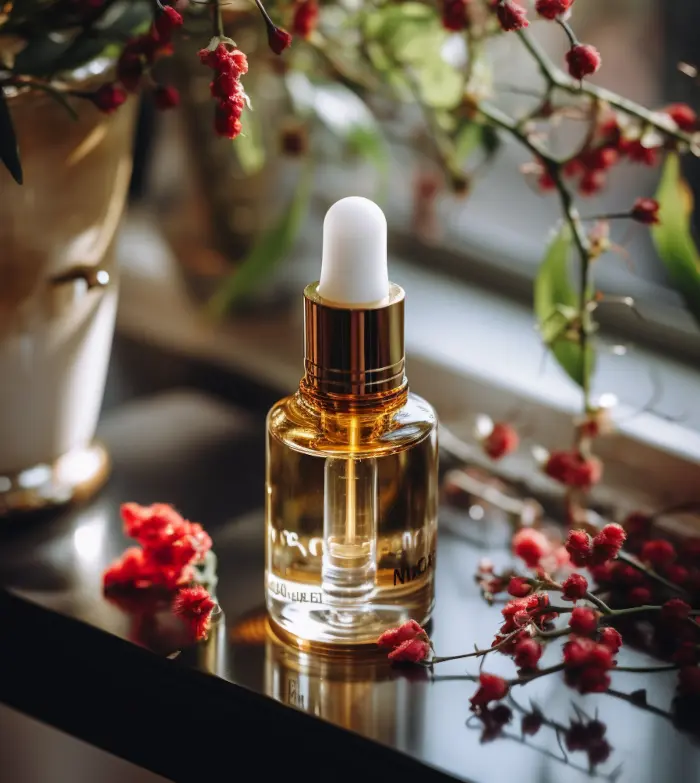
What Is Arbutin?
Arbutin is a derivative of hydroquinone but doesn’t carry the harmful side effects associated with hydroquinone, and many dermatologists have approved it. It’s derived from berries of bearberry, blueberry, and cranberry plants.
How Does Arbutin Treat Hyperpigmentation?
It works to brighten your complexion by inhibiting an enzyme called tyrosinase. This enzyme plays a crucial part in your skin making melanin, but it can go into overdrive when exposed to the sun or when the skin becomes inflamed, like when you’re breaking out. Turning down the production level of this enzyme in your skin can help break up excess hyperpigmentation.
Arbutin works by slowly releasing hydroquinone through hydrolysis, which inhibits the enzyme tyrosinase and prevents melanin production (pigmentation). It’s like you’re deactivating the process in your skin that creates these dark pigment clusters, and I’m a big fan of that idea.
An increasing amount of research confirms that arbutin is an effective ingredient for brightening an uneven skin tone, post-inflammatory hyperpigmentation (PIH), and melasma.
Although it is a safer alternative to hydroquinone, if you’re pregnant or trying to conceive, you should play it super safe and not use arbutin in your skincare routine. Instead, opt for Korean skincare products containing bearberry extract.
Best Korean Alpha Arbutin Serum
Arbutin has been in skincare as a brightening agent, and I’ve been a fan for quite some time.
1. Beauty of Joseon Glow Deep Serum: Rice + Alpha-Arbutin
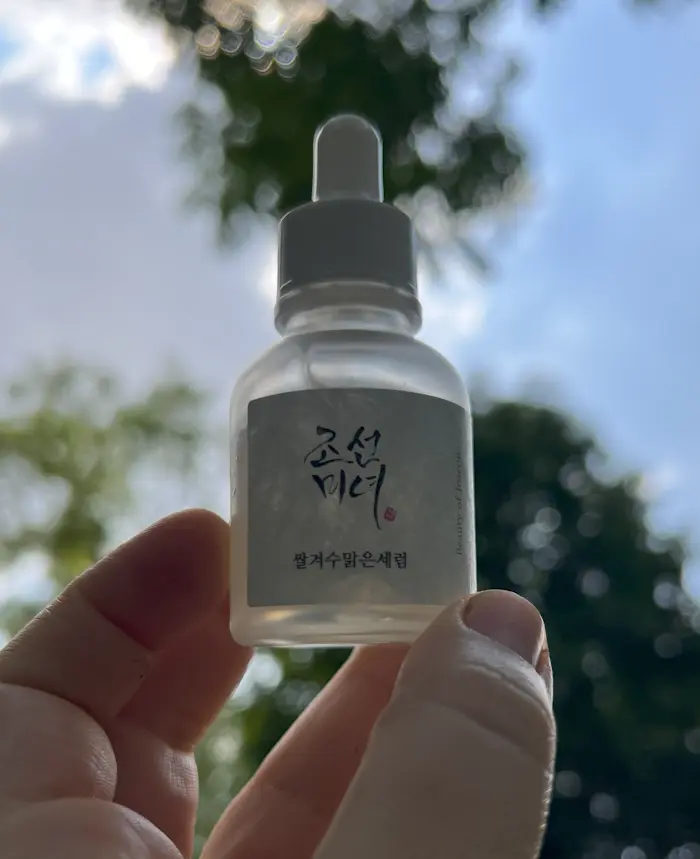
I have been enjoying using Beauty of Joseon Glow Deep Serum as it hydrates, keeps my skin balanced and healthy, and gives it a gorgeous, dewy glow that looks amazing underneath makeup. The Beauty of Joseon Glow Deep Serum is an excellent product for achieving a healthy and glowing complexion. Read the full review of the Beauty of Joseon Glow Deep Serum: Rice + Alpha-Arbutin.
Beauty of Joseon Glow Deep Serum Ingredients List (last checked 2025)
Oryza Sativa (Rice) Bran Water, Water, Glycerin, Butylene Glycol, 1,2-Hexanediol, Dipropylene Glycol, Alpha-Arbutin, Niacinamide, Methyl Gluceth-20, Panthenol, Polyglycerin-3, Trehalose, Glyceryl Glucoside, Hydrolyzed Jojoba Esters, Hydroxyethyl Acrylate/Sodium Acryloyldimethyl Taurate Copolymer, Ethylhexylglycerin, Hydroxyethylcellulose, Xanthan Gum, Arginine, Acrylates/C10-30 Alkyl Acrylate Crosspolymer, Disodium EDTA, Coptis Japonica Root Extract, Sorbitan Isostearate, Glucose, Coix Lacryma-Jobi Ma-Yuen Seed Extract, Glycine Soja (Soybean) Seed Extract, Hordeum Distichon (Barley) Extract, Oryza Sativa (Rice) Extract, Sesamum Indicum (Sesame) Seed Extract, Triticum Vulgare (Wheat) Seed Extract, Vigna Radiata Seed Extract, Zea Mays (Corn) Kernel Extract.
Herbs Humectant/Moisturizing Active
2. SkinCeuticals Phyto Plus serum
I recommend the SkinCeuticals Phyto Plus serum as a Western skincare product. This skin-lightening serum contains arbutin and other ingredients for fading hyperpigmentation, such as kojic acid, bearberry extract, and a vitamin C derivative. It’s available at Dermstore.
7. Glutathione for Hyperpigmentation
Glutathione is a potent antioxidant in almost every cell in our body. It is a “free radical scavenger,” meaning it defends cells against environmental damage such as UV radiation. Interestingly, the amount of glutathione naturally present in our body declines as we age, which may be one of the factors that leads to outward signs of aging.
Glutathione’s ability to brighten the skin was accidentally discovered as a detoxifying treatment for some medical conditions and procedures. It is quickly becoming a popular anti-aging and skin-brightening ingredient in Western and Korean skincare products.
However, although glutathione’s popularity is growing worldwide (and it is considered a safe and low-risk ingredient), it’s important to note that much more research is still needed. For example, glutathione in aqueous solution is highly unstable (it decomposes quickly), which is why clinical studies involving topical glutathione haven’t been conducted.
However, there is some evidence that oxidized glutathione is more suitable for liquid form as it converts to glutathione in the skin and is less susceptible to decomposition in aqueous solution.
How Does Glutathione Fade Hyperpigmentation?
Scientific evidence suggests that glutathione brightens the skin via more than one pathway.
We know that glutathione works similarly to other antioxidants, such as vitamin C, in that it inhibits the enzyme tyrosinase – thereby preventing the formation of melanin. However, it also can switch from eumelanin (dark pigment) to phaeomelanin (lighter pigment) production.
As I’ve already mentioned, more research is needed to determine precisely how glutathione brightens the skin and what concentration and duration of use are the most effective.
The Best Korean Glutathione Serums for Treating Hyperpigmentation
COSRX The Vitamin C 23 Serum
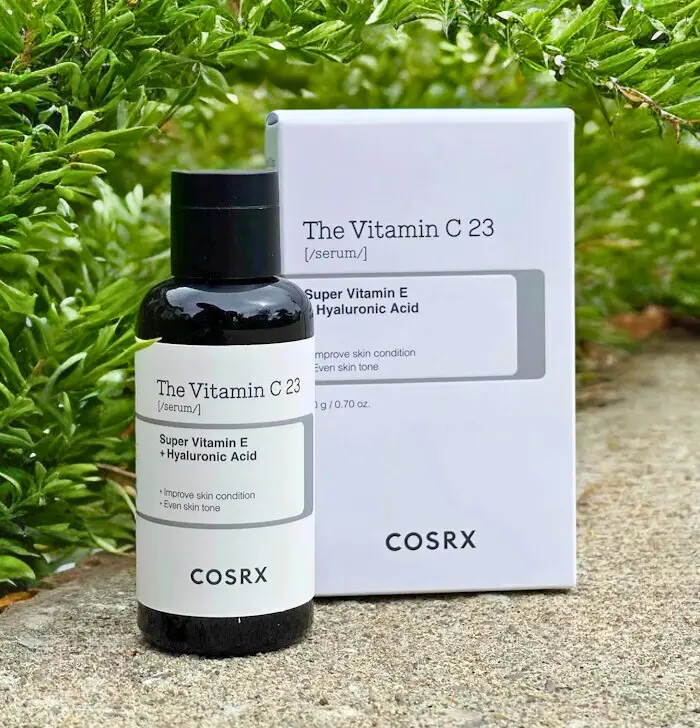
My top pick for a Korean product containing glutathione is COSRX The Vitamin C 23 Serum. Besides Glutathione, the COSRX vitamin C has 23% pure vitamin C (L-ascorbic acid), as well as licorice root extract (skin brightening and soothing), butylene glycol, allantoin, and sodium hyaluronate (humectants for skin hydration).
COSRX The Vitamin C 23 Serum Ingredients List (last checked 2025)
Water, Ascorbic Acid (23%), Propanediol, Dimethicone, Tromethamine, Panthenol, Ethyl Ascorbyl Ether, Squalane, Caffeine, Sodium Chloride, Sodium Hyaluronate, Sodium Sulfite, Disodium EDTA, Glutathione, Adenosine, Acetyl Glucosamine, Gardenia Florida Fruit Extract, Allantoin, Dextrin, Tocotrienols, Tocopherol, Elaeis Guineensis (Palm) Oil, Butylene Glycol, Arginine, Niacinamide, Pentylene Glycol, Alcohol Denat, Helianthus Annuus (Sunflower) Seed Oil, Glycyrrhiza Glabra (Licorice) Root Extract, Methyl Trimethicone, Carthamus Tinctorius (Safflower) Seed Oil, Camellia Japonica Seed Oil, Daucus Carota Sativa (Carrot) Root Extract, Beta-Carotene.
Active Herbs Humectant/Moisturizing Brightening Possible irritant Fragrance
8. Licorice Root Extract
Another member of the tyrosinase inhibitor family, licorice extract, is a skin brightener that has been around in the Korean beauty industry for quite some time. There’s a serious focus on skin brightening in Korea if you can’t tell.
Licorice is not as well-researched as some of its cousins. Still, evidence has shown that the ingredient helps even out skin by inhibiting tyrosinase and bringing a compound called Glabridin to the table, which reduces pigmentation brought on by the sun and reduces inflammation, thereby helping with any redness.
Licorice extract also brings antioxidant benefits to the table, making it a great ingredient to use, particularly during the day under your sunscreen (which I’m sure you’re applying whenever you leave the house). So, for someone like me who is almost always dealing with some PIH and lives in one of the sunniest places in the world with frequent poor air quality, it’s something I don’t like to be without in my skincare.
The licorice plant (Glycyrrhiza glabra) is found naturally in some parts of Europe and Asia. Its medicinal properties have been utilized for thousands of years to treat different illnesses.
When looking for this ingredient in products, it will be listed as licorice root extract, or it can be listed as one of three of its components: glycyrrhizin, Liquirtin, or Glabridin.
My colleague Seo Yeon Lee recently wrote an in-depth article about how effective licorice root extract is at treating hyperpigmentation.
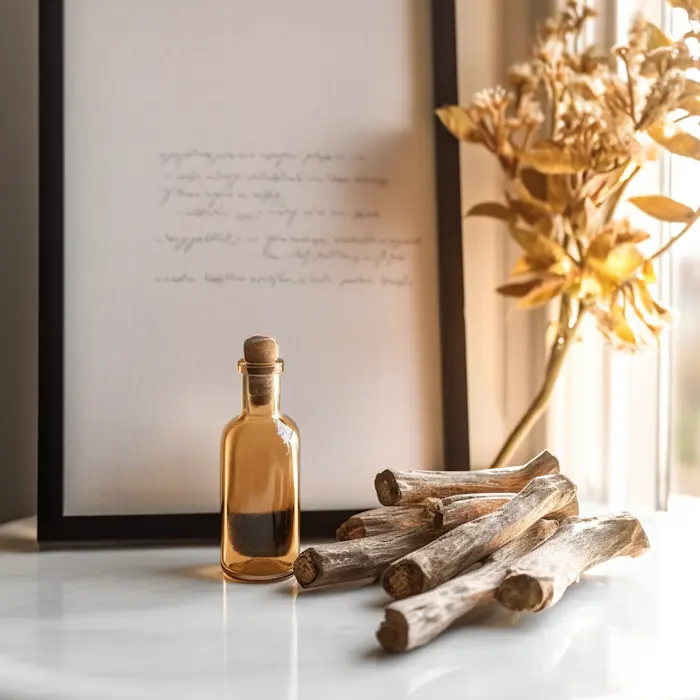
Licorice Root for Fading Melasma
Glabridin protects the skin from hyperpigmentation in the first place by inhibiting the pigment-producing enzyme tyrosinase. At the same time, Liquirtin, on the other hand, can diffuse the melanin in existing pigmentation and increase the skin cell renewal rate. This makes licorice root extract an excellent ingredient for people wanting to fade melasma.
Best Korean Skincare Products with Licorice Root Extract
Acwell Licorice pH Balancing Cleansing Toner
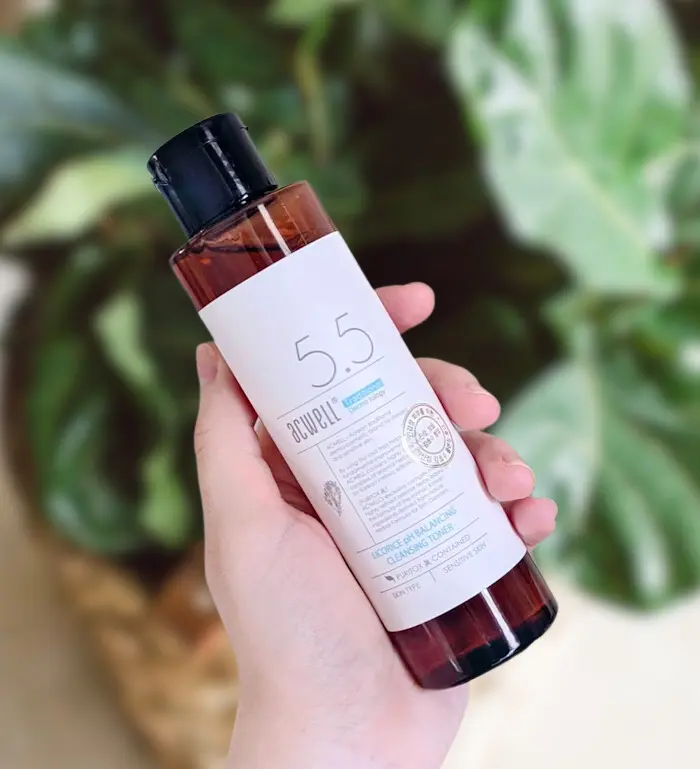
One of the best Korean skincare products that contains licorice root extract is the Acwell Licorice pH Balancing Cleansing Toner. It has four Korean medicinal plants: licorice, peony, cimicifuga, and arrowroot extracts. It’s perfect for fading hyperpigmentation for those looking to cleanse with a low-pH cleanser without using water.
9. Centella Asiatica
Centella Asiatica, tiger grass, gotu kola: It’s got a million names and does what feels like a million things for your skin. Centella has had a bit of a global moment in skincare in recent years, but as always, it’s something ancient that’s become the new thing again.
Much like azelaic acid, this Korean ingredient deserves to have its praises sung all on its own, but among its many virtues, evening out skin tone is one of the reasons it’s always in my skincare routine.
Centella also helps bring down inflammation in the skin, which helps combat that generalized redness I mentioned previously, but it also helps with promoting wound healing. I always picture someone being attacked by a vampire or something when I hear the word “wound.” Still, regarding the skin, anything from sunburns and breakouts to over-exfoliation can all fall into the “damage” or “wound” category.
The more you can speed up the recovery process, the less time your skin spends inflamed, which can help minimize the severity of any PIH. It’s like a little loop of skin healing and recovery, and I try to live in this loop as best as possible.
The Best Korean Cica Serums for Hyperpigmentation
SKIN1004 Madagascar Centella Asiatica 100 Ampoule

This Centella product comes as an ampoule. Sometimes, we must look past all the other big-name brands and see what lesser-known ones offer!
So, how did this shy little ampoule come out on top? It’s down to its ingredient list, which contains 100% Centella Asiatica extract!!
Skin1004’s Centella ampoule contains only Centella Asiatica extract with three active compounds: Asiaticoside, Asiatic acid, and Madecassic acid, making it an excellent choice for sensitive or acne-prone skin.
The Centella Asiatica plant is harvested in Madagascar (hence the product’s name). It is then processed in Korea, where a low temperature is extracted. The extract is then put through a tiny microfilter and bottled. The resulting chemical composition of the Madagascar Centella Asiatica Ampoule is as follows:
- 40% Madecassic Acid – soothing, reduces hyperpigmentation, acne, and acne scarring;
- 30% Asiatic Acid – skin barrier strengthening, calming for sensitive spots, antioxidant, and improves skin elasticity;
- 30% Asiaticoside – oil-water balancing, stimulates collagen production, anti-aging.
The great thing about this being such a lightweight serum is that it is fantastic for layering, and it can be added to your moisturizer or other creams and applied that way. Also, for the 100ml you get, it’s one of the most affordable products I have tried.
Pros
- Perfect for sensitive skin
- Fragrance and essential oil-free
- Alcohol-free
- Affordable
Cons
- None
10. Natural Oils to Treat Hyperpigmentation
Some natural oils have properties that make them very suitable for treating hyperpigmentation. However, putting more oil on your face if you already have oily or acne-prone skin can be scary.
Note, though, that I’m not talking about essential oils here. Essential oils are extremely sensitizing for your skin and can even cause allergic reactions and contact dermatitis!
The Right Oils For Your Skin Type
Which oil you decide to use depends on your skin type and the essential acid composition of the oil (the linoleic and oleic acid ratio):
The rule to remember when it comes to oils is that dry oils are higher in linoleic acid and are suitable for people with oily skin types. On the other hand, heavy oils are higher in oleic acid and are ideal for people with dry skin types. If you have oily skin, you could still benefit from a heavier oil, but spot treatment is recommended instead of applying it on your whole face.
The Best Oils for Treating Hyperpigmentation
1. Rosehip Oil
Rosehip oil is great at fading hyperpigmentation due to its high retinoic acid (vitamin A) composition. This oil is high in linoleic acid, so oily and acne-prone skin types will tolerate it.
Rosehip oil is often one of the first oils people reach for skincare. This oil is extracted from Chilean rosebush seeds and contains vitamins (including vitamin A), minerals, and antioxidants, which treat hyperpigmentation. These mainly work by increasing cell turnover and protecting the skin from dark spots and sun damage by fighting free radicals.
The thing I love about rosehip oil is its hydrating and makes my skin look instantly plumper. It absorbs quickly into the skin and doesn’t leave a greasy residue.
I like to add one or two drops of this Kate Blanc Rosehip Oil* to my moisturizer and apply it to my whole face. If you have drier skin, you can add more.
2. Tamanu Oil
I’ve read a lot about the benefits of tamanu oil and its ability to help treat hyperpigmentation. YouTuber Liah Yoo swears by it for fading acne scarring and sunspots! While researching for this article, I discovered that tamanu oil is also effective at smoothing wrinkles and fading stretch marks.
Where Does Tamanu Oil Come From?
Tamanu oil is extracted from the nut of the tamanu tree, which grows in coastal areas in Polynesia, Australia, the tropical coast of Africa, and south India. Traditionally, this oil was used by people as a natural sunscreen and moisturizer, but it has medicinal uses, too.
If you have oily or acne-prone skin like me and want to try tamanu oil to treat your hyperpigmentation, you should only use it as a spot treatment instead of applying it to your whole face.
NOW Solutions Organic Tamanu Oil* is 100% pure, which I am considering trying as a spot treatment.
3. Sea Buckthorn Oil
You might have noticed some Korean skincare products containing sea buckthorn oil. What is this oil, and why is it used in skincare products?
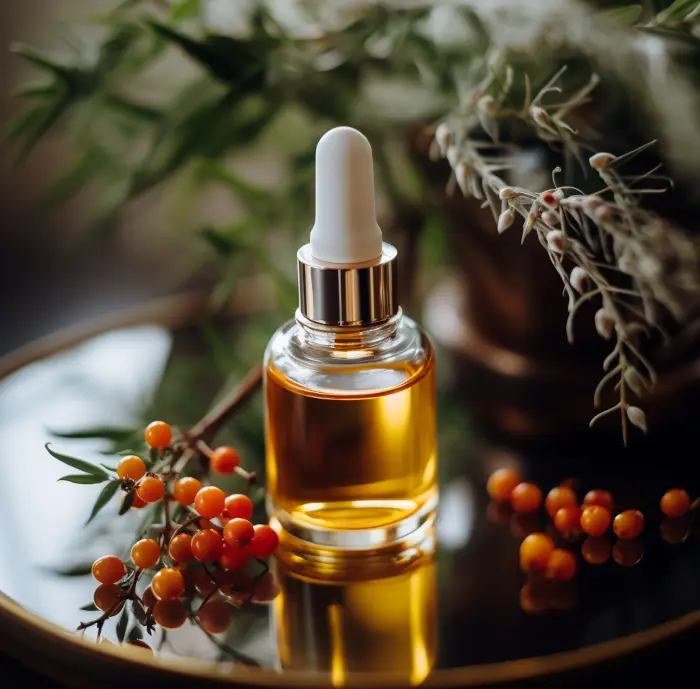
Sea buckthorn is a thorny shrub found along the Atlantic coast of Europe and throughout Asia. Sea buckthorn oil is derived from the fruit that grows on this plant. This oil is being added to skin care products because it contains more than 190 nutrients, over 60 antioxidants, and has 12 times the amount of vitamin C than oranges. It’s also very high in vitamins E and A and fatty acids, which are great for skin and treat hyperpigmentation.
This oil is an excellent choice to heal your skin from sun damage, as it contains rare palmitoleic acid (Omega 7). I discovered that its skin healing properties are so excellent that it’s used to treat burn victims in Eastern Europe.
I also discovered two types of sea buckthorn oil: berry and seed oil. The berry oil is better for treating hyperpigmentation because it contains higher vitamin C. However, the sea buckthorn berry oil is also relatively high in oleic acid compared to linoleic acid and, therefore, might not be suitable for people with oily and acne-prone skin types.
The fatty acid composition of sea buckthorn seed oil is much more balanced and, therefore, might be more suitable for you if you have oily or acne-prone skin. However, the vitamin C content is not as high. It still contains many other nutrients, fatty acids, and antioxidants that would benefit your skin.
Siberian Treasure Store sells Siberian Sea Buckthorn Oil, 100% cold-pressed, extra Virgin Sea Buckthorn berries.

11. Chemical Exfoliants – AHAs and BHAs – to Treat Hyperpigmentation
Alpha hydroxy acids (AHAs) and beta hydroxy acids (BHAs) are chemical exfoliants often added to Korean skincare products, particularly toners. They are generally much less abrasive than physical exfoliants such as scrubs.
If you want to treat hyperpigmentation, I highly recommend adding an AHA and BHA into your routine. These acids increase your skin’s cell turnover, revealing newer, undamaged skin faster.
Alpha Hydroxy Acids (AHAs)
AHAs exfoliate the dead skin cells from the surface of our skin, removing hyperpigmented discolored skin cells and making way for new healthy skin cells to shine on the surface.
AHAs are water-soluble and break down the top layer, which holds dead skin cells together, smoothing and evening out skin tone. AHAs are better suited to dry skin types, as they attract water molecules.
Korean skincare products are formulated with various kinds of alpha-hydroxy acids:
- Glycolic acid
- Lactic acid
- Mandelic acid
- Malic acid
- Tartaric acid
- Citric acid
Check out our ultimate guide about the best Korean skincare products with AHA.

Glycolic acid is the most common alpha-hydroxy acid in skincare treatments. It is also the most researched form of AHA. Glycolic acid is mainly derived from sugar cane, and it has the smallest molecular size out of all the various forms of AHA – which means it can penetrate deeper into the skin.
Glycolic acid also changes skin appearance, function, and texture by increasing epidermal thickness, epidermal and dermal levels of hyaluronic acid, and type I collagen gene expression.
Past research on glycolic acid suggested that it treated hyperpigmentation by accelerating the remodeling and exfoliation of the skin. New research suggests that it might directly inhibit the tyrosinase enzyme.
I think an excellent choice for an AHA is the COSRX AHA 7 Whitehead Power Liquid. Glycolic acids have been shown to work just as well as retinoic acids in fading hyperpigmentation (they’re used in many chemical peels).
Glycolic acids have been shown to work just as well as retinoic acids in fading hyperpigmentation (they’re used in many chemical peels).
Should You Exfoliate Before or After Toner?
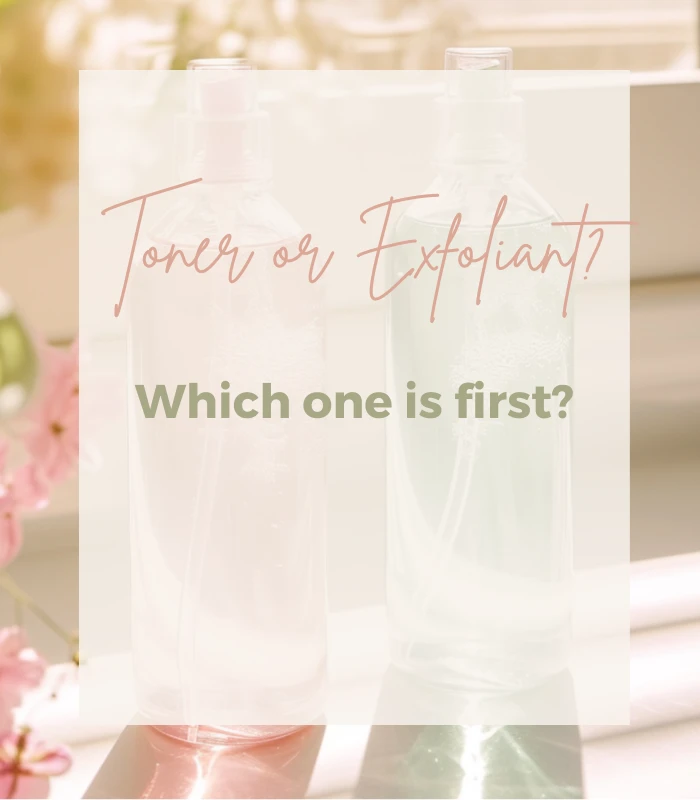
BHAs
BHA is my favorite chemical exfoliant as it’s a multi-tasker. Also known as salicylic acid, BHA fights acne through exfoliation and its anti-inflammatory action. BHA is oil soluble and works at a deeper skin level. It can get further into pores and exfoliate the pore lining, making them great for reducing oil production and controlling acne breakouts.
Due to its multi-tasking nature, a BHA is particularly useful in fighting post-inflammatory hyper-pigmentation (PIH). It is also very gentle at the OTC strengths (<2%).
How BHA Treats Hyperpigmentation
BHA treats hyperpigmentation due to its ability to inhibit melanin formation.
Best Korean Toner for Hyperpigmentation
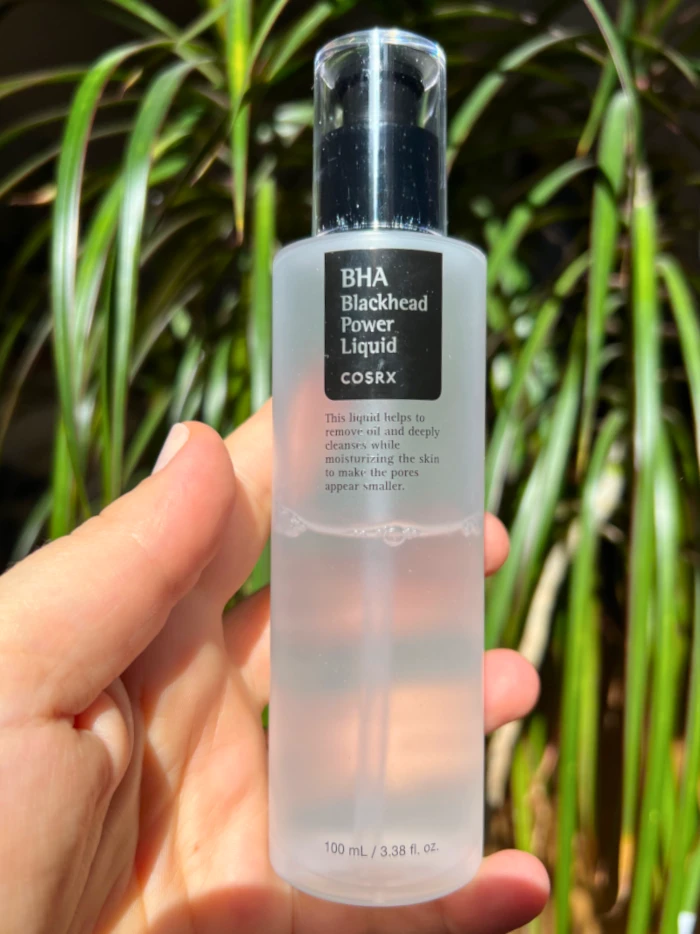
The Korean BHA I’m using and have seen excellent results with is the COSRX BHA Blackhead Power Liquid. It’s the most popular Korean BHA skincare product, containing 4% betaine salicylate and willow bark extract.
It seeps into the skin to clear away deep, stubborn impurities.
The COSRX BHA Blackhead Power Liquid is one of the best COSRX products for oily acne-prone skin because it hydrates and gently exfoliates the skin. It doesn’t feel drying or stripping at all. COSRX has been smart enough to include three awesome humectants: panthenol, sodium hyaluronate, and butylene glycol.
And as if that wasn’t enough, also added in is 2% niacinamide, which has anti-aging, skin-brightening, and pore-shrinking properties.
I love how minimal the COSRX ingredient lists are!
COSRX BHA Blackhead Power Liquid Ingredients List (last checked 2025)
Salix Alba (Willow) Bark Water, Butylene Glycol, Betaine, Niacinamide, Betaine Salicylate, 1,2-Hexanediol, Sodium Hydroxide, Sodium Hyaluronate, Panthenol, Xanthan Gum, Ethyl Hexanediol.
Ingredients referred from the COSRX’s official website.
Active Humectant/Moisturizing
Sunscreen
Sunscreen is my favorite ingredient for preventing hyperpigmentation. Sunscreen cannot treat hyperpigmentation. It’s not going to erase what you already have. But it will prevent the sunspots you already have from getting worse.
Much of the frustration of dealing with hyperpigmentation lies with not only the aesthetics but also the duration and the fact that it may reoccur. Many ingredients used to treat hyperpigmentation expose fresh, vulnerable skin to the sun’s rays. So lather up on the SPF and avoid the sun if you can. Look for a broad spectrum SPF 30 or above, vital for treated skin.
Beauty of Joseon Relief Sun: Rice + Probiotics
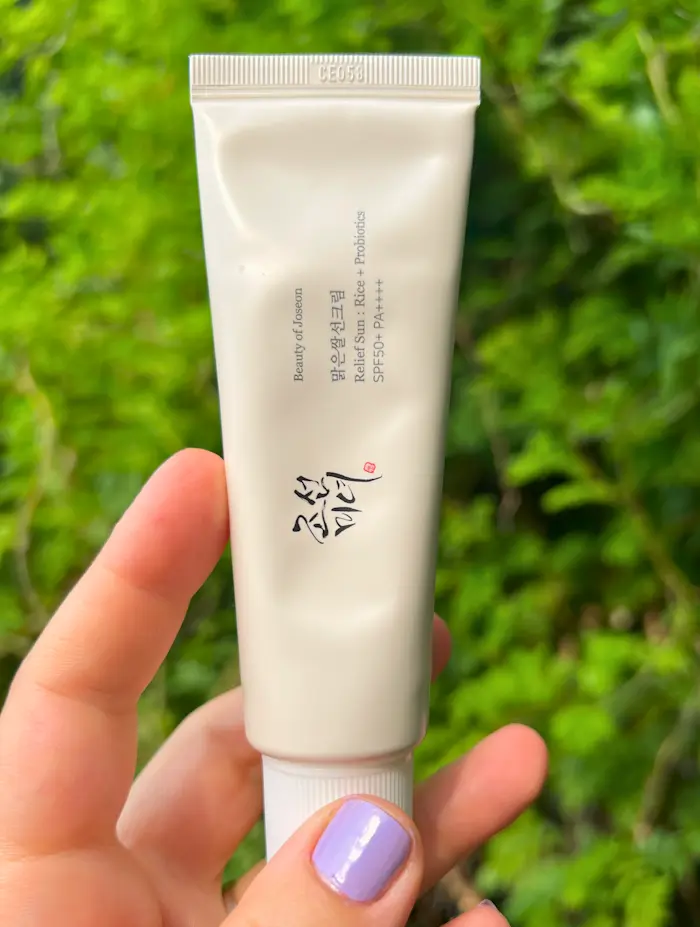
The Beauty of Joseon Relief Sun is a fantastic sunscreen I recommend. It lives up to its hype. It prevents hyperpigmentation from protecting from the sun’s harmful UV rays. At the same time, rice extract, niacinamide, and adenosine help treat existing hyperpigmentation. Its texture and finish are divine and suitable for every skin type and color.
Beauty of Joseon Relief Sun Ingredients List (last check 2025)
Water, Oryza Sativa (Rice) Extract (30%), Dibutyl Adipate, Propanediol, Diethylamino Hydroxybenzoyl Hexyl Benzoate, Polymethylsilsesquioxane, Ethylhexyl Triazone, Niacinamide, Methylene Bis-benzotriazolyl Tetramethylbutylphenol, Coco-caprylate/Caprate, Caprylyl Methicone, Diethylhexyl Butamido Triazone, Glycerin, Butylene Glycol, Oryza Sativa (Rice) Germ Extract, Camellia Sinensis Leaf Extract, Lactobacillus/Pumpkin Ferment Extract, Bacillus/Soybean Ferment Extract, Saccharum Officinarum (Sugarcane) Extract, Macrocystis Pyrifera (Kelp) Extract, Cocos Nucifera (Coconut) Fruit Extract, Panax Ginseng Root Extract, Monascus/Rice Ferment, Pentylene Glycol, Behenyl Alcohol, Poly C10-30 Alkyl Acrylate, Polyglyceryl-3 Methylglucose Distearate, Decyl Glucoside, Tromethamine, Carbomer, Acrylates/C10-30 Alkyl Acrylate Crosspolymer, 1,2-Hexanediol, Sodium Stearoyl Glutamate, Polyacrylate Crosspolymer-6, Ethylhexylglycerin, Adenosine, Xanthan Gum, Tocopherol, Lactobacillus/Rice Ferment, Aspergillus Ferment, Saccharomyces/Rice Ferment Filtrate.
UV filters Herbs Humectant/Moisturizing Active Ferments
Now, you have no excuse. Wear that sunscreen!
Conclusion
I will continue discussing hyperpigmentation and uneven skin tone because it is Mt. Everest in my skincare journey. But I hope I’ve given you another tool or two to add to your arsenal or mentioned something new to try if you feel that what you’re currently using isn’t giving you the result that you’re looking for.
Don’t forget that sunscreen or every other effort you make in your routine will be useless.
Have lots of patience. Hyperpigmentation, especially sun spots, is challenging to treat. It can take at least 3 to 4 months to see noticeable improvements.
Happy shopping, and here’s to great skin in 2025!
Show Me Proof
- Palumbo, Anna, Marco d’Ischia, Giovanna Misuraca, and Giuseppe Prota. “Mechanism of inhibition of melanogenesis by hydroquinone.” Biochimica et Biophysica Acta (BBA)-General Subjects 1073, no. 1 (1991): 85-90.
- Penney, Kathryn B., Christopher J. Smith, and John C. Allen. “Depigmenting action of hydroquinone depends on disruption of fundamental cell processes.” Journal of investigative dermatology 82, no. 4 (1984): 308-310.
- Monteiro, Rochelle C., B. Nanda Kishore, Ramesh M. Bhat, D. Sukumar, Jacintha Martis, and H. Kamath Ganesh. “A comparative study of the efficacy of 4% hydroquinone vs 0.75% kojic acid cream in the treatment of facial melasma.” Indian journal of Dermatology 58, no. 2 (2013): 157.
- Lim, Joyce Teng Ee, and Frcpi. “Treatment of melasma using kojic acid in a gel containing hydroquinone and glycolic acid.” Dermatologic surgery 25, no. 4 (1999): 282-284.
- Bylka, Wiesława, Paulina Znajdek-Awiżeń, Elżbieta Studzińska-Sroka, and Małgorzata Brzezińska. “Centella asiatica in cosmetology.” Advances in Dermatology and Allergology/Postępy Dermatologii i Alergologii 30, no. 1 (2013): 46-49.
- Bernstein, Eric F., Jason Lee, Douglas B. Brown, Ruey Yu, and Eugene Van Scott. “Glycolic acid treatment increases type I collagen mRNA and hyaluronic acid content of human skin.” Dermatologic Surgery 27, no. 5 (2001): 429-433.
- Sugimoto, Kazuhisa, Takahisa Nishimura, Koji Nomura, Kenji Sugimoto, and Takashi Kuriki. “Inhibitory effects of α-arbutin on melanin synthesis in cultured human melanoma cells and a three-dimensional human skin model.” Biological and Pharmaceutical Bulletin 27, no. 4 (2004): 510-514.
- Ertam, Ilgen, Basak Mutlu, Idil Unal, Sibel Alper, Bijen Kivcak, and Ozgen Ozer. “Efficiency of ellagic acid and arbutin in melasma: A randomized, prospective, open‐label study.” The Journal of dermatology 35, no. 9 (2008): 570-574.
- Inoue, Yu, Seiji Hasegawa, Takaaki Yamada, Yasushi Date, Hiroshi Mizutani, Satoru Nakata, Kayoko Matsunaga, and Hirohiko Akamatsu. “Analysis of the effects of hydroquinone and arbutin on the differentiation of melanocytes.” Biological and Pharmaceutical Bulletin 36, no. 11 (2013): 1722-1730.

